|
za avgust 2004 goda.
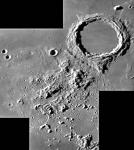 Archimedes and his Mountains
Archimedes and his Mountains
31.08.2004 | Lunnoe foto dnya
Archimedes is the largest crater inside the Imbrium Basin (Sinus Iridum is bigger but its on the rim rather than inside). But I don't think it is observed much because its floor lacks a central peak and its small pits, unlike Plato's, haven't become known as a test for seeing and optics.
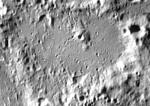 Are Central Peaks Volcanoes?
Are Central Peaks Volcanoes?
30.08.2004 | Lunnoe foto dnya
Although Ralph Baldwin in his 1949 book, The Face of the Moon, solved the problem of the origin of lunar craters, there continued to be a number of mostly European observers who vociferously argued that craters were volcanoes.
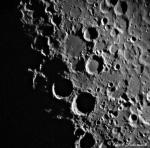 X Marks the Spot
X Marks the Spot
29.08.2004 | Lunnoe foto dnya
Cruising the terminator is how to see the most dramatic Moon views. Usually they are on the lit side, but it is always exciting to see a lone tall peak catching the morning rays before the surrounding terrain has become illuminated.
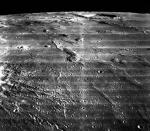 Volcanic Hills in the Ocean of Storms
Volcanic Hills in the Ocean of Storms
28.08.2004 | Lunnoe foto dnya
The Moon is the only object in the universe where we can compare kilometer scale details from telescope views with evocative orbital oblique perspectives. From Earthly telescopes we see a field of hills and bumps west of the crater Marius.
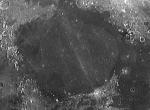 Serenitatis in Black and White and Gray
Serenitatis in Black and White and Gray
27.08.2004 | Lunnoe foto dnya
As sunrise creeps across the lunar surface, all telescopes are glued to that magic zone of long shadows and subtle topography. Thus each spot on the Moon is only observed for the day of sunrise and a few days following, and then ignored until the next lunation (who really observes the sunset terminator?).
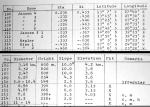 A Lost 40 Year Old Dome Catalog
A Lost 40 Year Old Dome Catalog
26.08.2004 | Lunnoe foto dnya
While visiting the Wolbach Library of the Harvard-Smithsonian Center for Astrophysics in Boston just before the Venus transit I discovered a comprehensive study of domes written in 1964. It is a master of science thesis by David L. Brungart, a student at the Air Force Institute of Technology at Wright-Patterson Air Force Base in Ohio.
 Men on the Moon
Men on the Moon
25.08.2004 | Lunnoe foto dnya
In 2004 there are apparently millions of amazingly gullible people (and one insipid TV network) willing to believe that Apollo astronauts never landed on the Moon. But in 1835 much of the world wanted to believe that men were on the Moon.
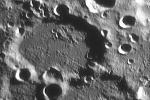 Don's Crater To Be?
Don's Crater To Be?
24.08.2004 | Lunnoe foto dnya
Lunar Craters are given names to commemorate significant contributors to science, especially lunar science. Unfortunately for scientists still alive, more than 1000 names have already been used to honor dead scientists and others, so that your name may already have been taken.
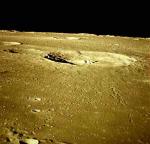 Almost on the Ground
Almost on the Ground
23.08.2004 | Lunnoe foto dnya
Sometimes in the early evening sky, before it glares in complete darkness, the Moon takes on a golden hue, well captured and exaggerated here in a handheld photo by the Apollo 16 crew. The low oblique shot provides a near-profile view of this 60 km wide crater. Can you identify it?
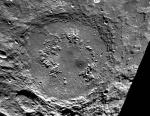 Schrodinger
Schrodinger
22.08.2004 | Lunnoe foto dnya
In 1971 Bill Hartmann and I published a paper on impact basins on the Moon that recognized three types: peak ring basins (like Compton with an inner ring and a central peak), peak ring basins and multi-ring basins, with three or more rings.

